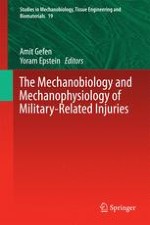2016 | OriginalPaper | Buchkapitel
Biomechanics of Eye Injury in the Military
verfasst von : Brittany Coats, Daniel F. Shedd
Erschienen in: The Mechanobiology and Mechanophysiology of Military-Related Injuries
Aktivieren Sie unsere intelligente Suche, um passende Fachinhalte oder Patente zu finden.
Wählen Sie Textabschnitte aus um mit Künstlicher Intelligenz passenden Patente zu finden. powered by
Markieren Sie Textabschnitte, um KI-gestützt weitere passende Inhalte zu finden. powered by
